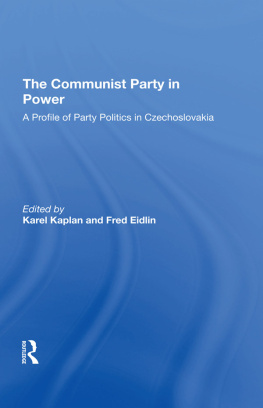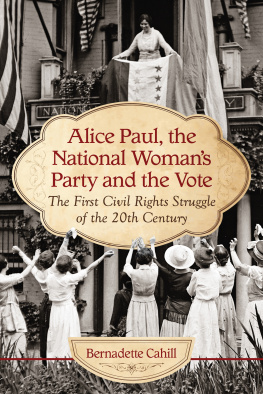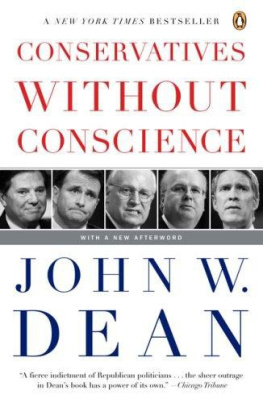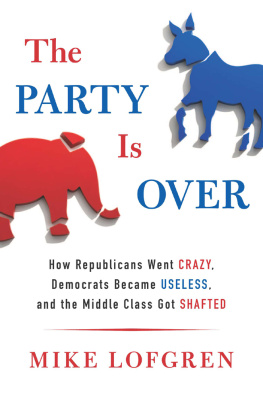from
Theocracy
to
Religious Liberty
from
Theocracy
to
Religious Liberty
Connecticuts Journey
from Thomas Jeffersons
Wall of Separation Letter
to a State Constitution,
as Told Through the
Newspapers of the Time
Chris Rodda
Published by the author
Highland Park, NJ
From Theocracy To Religious Liberty:
Connecticuts Journey from Thomas
Jeffersons Wall of Separation Letter
to a State Constitution, as Told Through
the Newspapers of the Time
2020 by Chris Rodda
All rights reserved.
Dedicated to the memory of all the
journalists, satirists, and poets
of the first decades of the 1800s
whose wonderful writings
provided the material
for this book.
Contents
Introduction
On January 1, 1802, Thomas Jefferson wrote his now-famous letter to the Danbury, Connecticut Baptists, in which he coined the phrase separation between church and state.
Jefferson was replying to an address from the Danbury Baptist Association in which the Baptists, after congratulating him on his election to the presidency, told him of the oppression they faced as a dissenting sect under the Congregationalist-Presbyterian theocracy of their state.
It would be another fifteen years before Jefferson, upon hearing of the Republican victory in the 1817 Connecticut election, would write to John Adams:
I join you therefore in sincere congratulations that this den of the priesthood is at length broken up, and that a protestant popedom is no longer to disgrace the American history and character.
This book, through newspaper articles from the time, tells the story of what happened over that eventful decade and a half to transform Connecticut from a protestant popedom, as Jefferson put it, into a state with a constitution that guaranteed religious freedom.
Its hard not to draw parallels between the political parties of the first decades of the 1800s in New England and the political parties of today. The Federalists, like todays Republicans, were the conservatives, the party that believed the rich should rule, feared that more people being able to vote would put them out of power, regarded immigrants with contempt, and hypocritically boasted of having all the religion. The Federalist clergy, like the right-wing clergy of today, were outspokenly political, preaching that it was a religious duty to vote for Federalists. The Republicans, the party of Jefferson, also called Democrats and Democratic-Republicans, were, like todays Democrats, the liberal party. The Republicans labeled the Federalists aristocrats, monarchists, and religious hypocrites. The Federalists labeled the Republicans disorganizers, infidels, and Jacobins, claiming that they wanted to destroy all religion, and, among the charges that sound very familiar today, wanted to do away with the institution of marriage. In the election of 1800, the Federalist press and clergy warned that if Jefferson was elected president, Bibles would be burned, churches leveled to the ground, and the clergy driven from their pulpits and even killed. The Federalist cry of religion is in danger would be kept up throughout Jeffersons administration, although even after years of his being in office none of the dire predictions made before his election had come true.
In the election of 1800, all of the states had gone Republican except the New England states, New Jersey, and Delaware, with Jefferson and Aaron Burr defeating Federalists John Adams and Charles C. Pinckney. In 1804, Jefferson won reelection in a landslide, getting 162 electoral votes to Pinckneys 14. But while the Federalists had been soundly defeated nationally, and even the other New England states had gone for Jefferson, Connecticut, which supplied 9 of Pinckneys 14 electoral votes, remained a Federalist stronghold. That Jefferson won the other New England states in the 1804 presidential election did not mean that Federalism was dead in those states. Far from it. Federalism, and the animosity between the Federalists and the Republicans, remained very strong in the other New England states, particularly in Massachusetts. Nowhere, however, did the Federalists have the absolute stranglehold on the state government that they did in Connecticut.
The established religion of Connecticut was the Saybrook Platform, named for the town of Saybrook where, in 1708, acting on an order from the legislature directing the colonys Congregationalists and Presbyterians to hold a synod to form one church system for the colony, the two denominations were united to become one established order. For this reason, in the articles in this book, the established clergy and church are sometimes called Congregationalist and sometimes Presbyterian, terms that at this time in Connecticut were interchangeable. In both cases, the articles are referring to the Saybrook Platform establishment.
For taxing purposes, it was presumed by the government that everyone in Connecticut belonged to the established church and were taxed to support that church unless they certificated off, as it was called. This is what the Danbury Baptists were referring to when they wrote in their letter to Jefferson:
what religious privileges we enjoy (as a minor part of the State) we enjoy as favors granted, and not as inalienable rights: and these favors we receive at the expence of such degrading acknowledgements as are inconsistant with the rights of freemen.
This was the certificating off process, as it was explained in one newspaper by someone who on a sample certificate cheekily had John Calvin certificating off the Presbyterian Church:
Mr Barber. It is a lamentable fact that in this State, and in this enlightened age, those persons who, to answer a good conscience have left the Presbyterian (or established) order and attached themselves either to Episcopalian, Baptist or Methodist churches, are called on for taxes by the aforesaid established order, and these taxes are rigidly exacted, although the taxed never attend their meeting nor desire to. Many of the writers friends are in this predicament,and from observation I am induced to believe that a large number of our citizens are in the same situation; these circumstances have influenced me to send you the enclosed Certificate, which by being properly filled out, and deposited in the Society Clerks office, will prevent a repetition of the call for taxes after one year.
A Countryman.
This Certifies , That I differ in sentiments from the Worship and Ministry of the ecclesiastical Society in this State, constituted by law within certain local bounds, called the Presbyterian Society within the town of Saybrook, to which I have before been joined, and I choose to join myself to another denomination of Christians, which have formed themselves into a different Church or Congregation, for the maintenance and support of the public worship of God, known by the name of Methodists, ordinarily holding communion in the town of Saybrook.
Witness my hand, in Saybrook, this 25th day of December 1816.
JOHN CALVIN.
Although Connecticuts official nickname is the Constitution State, it was actually one of last of the original states to have a constitution. At the time of the American Revolution, all of the states except Rhode Island and Connecticut had adopted state constitutions. Connecticut, however, did not write a constitution, but continued under its 1662 royal charter granted by King Charles II, with the Connecticut General Court declaring in 1776:










